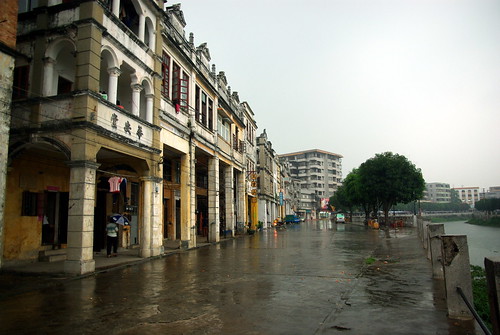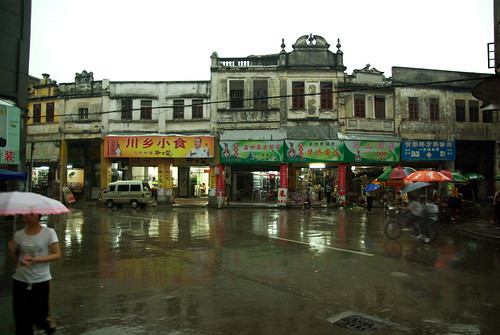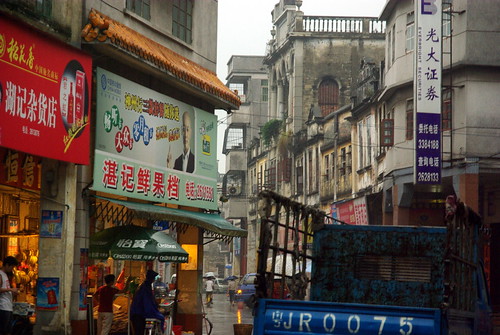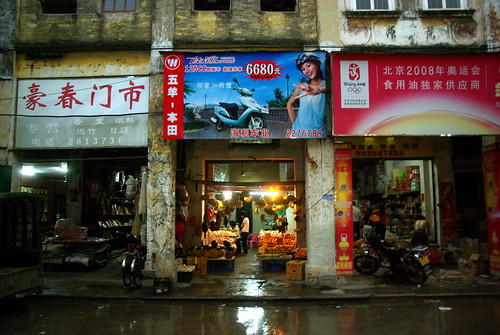When I visited China in the spring of last year, one of my most vibrant memories was of the old town west of Kaiping City named Chikan (赤坎) (Google Maps).
Yes, the Kaiping region is well-known for its diaolou, like Zili village, but the Chikan township, under a typical southern China with a thick summer rain pouring on us while we visited, was perhaps less spectacular, but a lot more “familiar”.
Chikan looks like a movie set — and I think there is a film studio built on the outskirts of the historical town. Buildings are darkened with mold, but the businesses look nonetheless thriving. My friend Tiffany, whose ancestral town is Kaiping, and I were the only “tourists” in that town on that particular day it seemed. Kaiping may be a UNESCO site, but Chikan seemed particularly thin in terms of out-of-towners when we visited.
There was a wet market, where the word “wet” took all its sense. Vendors were literally selling their foodstuffs on the ground, over old pieces of styrofoam/cardboard. The fresh produce looked amazingly fresh. There was also a “meat counter” that was exactly that: a table with pieces of meat that the butcher could chop for you.
Shops on the main street of Chikan (you can walk the whole town in 30 minutes) were pretty diverse, and included shoe shops, cellular phone dealers, rice vendors and coffin makers. There was one convenience shop — kind-of the Wal-Mart of Chikan.
It looks like Old Shanghai in that movie set that they used for Lust, Caution, and reused for a bunch of movies (like that razzie with Rene Liu, Fan Bingbing and Leon Lai), but also a bit like the Melaka old town (perhaps because it was built by Chinese? Or endured the same colonial influence?). It definitely makes me think that one of my ancestors could have lived in this type of house (but no, they were actually peasants).
From Hong Kong’s West Kowloon Ferry, Kaiping is extremely accessible, on speed foil, with a few hundred RMB and a valid passport. You can stay at the Ever Joint Hotel, a five-star hotel, for something like 300 RMB a night. We left the city by bus to Shenzhen, at the bus terminal, just on the island north of the hotel, across the river. For transportation, we hired a taxi that took us to Zili Village, and then Chikan. But taking the city bus back to Kaiping City (a 20-minute ride) is definitely the economical and adventurous way of doing things. I absolutely recommend that. It’s even more adventurous if you go around without a map on you.






Hi, I was in Chikan a few years ago, staying overnight while visiting the diaolou. Great to see your photos! You really captured the place well.
Thanks! Your “Redefining Lanzhou” site is very interesting. I’ve never been there — the only thing I know from there are the lamian / noodles… Kind of like what the bagel did for us here in Montreal.
Haha. Thanks. In fact, you have inspired me to create a page of links to blog posts and random mentions of Lanzhou noodles around the world…
http://lanzhou.weebly.com/noodles.html